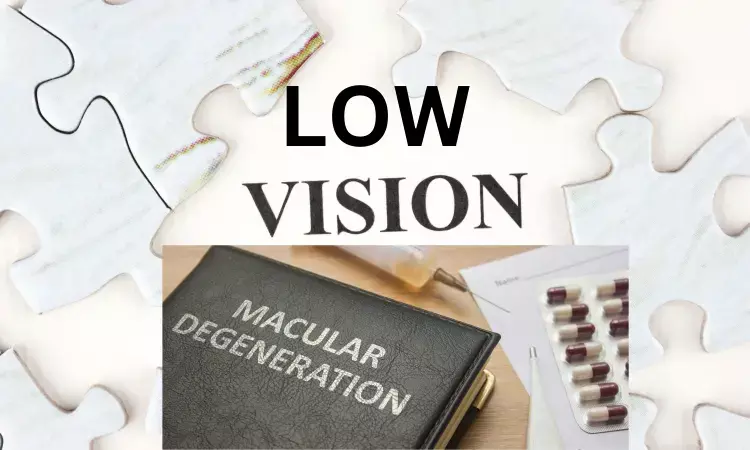- Home
- Medical news & Guidelines
- Anesthesiology
- Cardiology and CTVS
- Critical Care
- Dentistry
- Dermatology
- Diabetes and Endocrinology
- ENT
- Gastroenterology
- Medicine
- Nephrology
- Neurology
- Obstretics-Gynaecology
- Oncology
- Ophthalmology
- Orthopaedics
- Pediatrics-Neonatology
- Psychiatry
- Pulmonology
- Radiology
- Surgery
- Urology
- Laboratory Medicine
- Diet
- Nursing
- Paramedical
- Physiotherapy
- Health news
- Fact Check
- Bone Health Fact Check
- Brain Health Fact Check
- Cancer Related Fact Check
- Child Care Fact Check
- Dental and oral health fact check
- Diabetes and metabolic health fact check
- Diet and Nutrition Fact Check
- Eye and ENT Care Fact Check
- Fitness fact check
- Gut health fact check
- Heart health fact check
- Kidney health fact check
- Medical education fact check
- Men's health fact check
- Respiratory fact check
- Skin and hair care fact check
- Vaccine and Immunization fact check
- Women's health fact check
- AYUSH
- State News
- Andaman and Nicobar Islands
- Andhra Pradesh
- Arunachal Pradesh
- Assam
- Bihar
- Chandigarh
- Chattisgarh
- Dadra and Nagar Haveli
- Daman and Diu
- Delhi
- Goa
- Gujarat
- Haryana
- Himachal Pradesh
- Jammu & Kashmir
- Jharkhand
- Karnataka
- Kerala
- Ladakh
- Lakshadweep
- Madhya Pradesh
- Maharashtra
- Manipur
- Meghalaya
- Mizoram
- Nagaland
- Odisha
- Puducherry
- Punjab
- Rajasthan
- Sikkim
- Tamil Nadu
- Telangana
- Tripura
- Uttar Pradesh
- Uttrakhand
- West Bengal
- Medical Education
- Industry
Low vision rehabilitation improves quality of life in people with Age-related macular degeneration

Age-related macular degeneration (ARMD) constitutes an important part of the causes that lead to low vision and blidness. It is estimated that 300 million people in the USA will have ARMD by 2040 with the increase in life expectancy.
Damla Erginturk Acar and team, in the current study evaluated the low vision rehabilitation methods and the effect of visual rehabilitation on quality of life in patients with low vision due to geographic atrophy from age-related macular degeneration (ARMD). The findings of the study are published in Journal of Opthamology.
The study found that it is essential that low vision rehabilitation should be added to the treatment protocols of patients with ARMD in addition to multivitamin support and intravitreal injection, and it is important not to ignore their referral for low vision rehabilitation during their current treatment.
The researchers included better-seeing eye of 78 patients with geographic atrophy due to ARMD in the study. Sociodemographic characteristics, ophthalmological examination findings, and preferred low vision aids for near and distant were recorded. Fifty-seven patients who preferred to use a low vision aid device in daily life were considered as a rehabilitation group, whereas 21 patients who did not use any device were considered as a control group. The National Eye Institute Visual Function Questionnaire (NEI-VFQ-25) was applied to all patients at the initial examination and at least 6 months after the initial examination.
The key findings of the study are
• In the rehabilitation group, statistically significant increases were found in the overall composite score, and general vision, near and distance activities, social functioning, mental health, role difficulties, and dependency subscale scores of the NEI-VFQ-25 quality of life scale after low vision rehabilitation (p=0.009 for general vision, p < 0.001; for others).
• In the control group, there was no statistically significant change in any of the subscale scores or the overall score of the scale (p > 0.05).
• All 78 patients were recommended to use at least one low vision aid for near vision. Hyperocular glasses were recommended for 77 patients (98.72%), magnifiers for 15 patients (19.23%), electro-optical devices for 2 patients (2.56%), and telemicroscope for one patient (1.28%).
• Furthermore, 17 patients (21.8%) were prescribed more than one low vision aids. However, for distance vision, only 29 patients (37.18%) received a recommendation for a low vision aid.
Acar and team concluded that “Low vision patients with ARMD-related geographic atrophy should meet with low vision aids as soon as possible and should be included in low vision rehabilitation programs.”
Reference: Erginturk Acar D, Batioglu F, Idil A, Sahli E, Goksuluk D. Rehabilitation Methods for Patients with Geographic Atrophy due to Age-Related Macular Degeneration and Effects of Rehabilitation on Quality of Life. J Ophthalmol. 2023;2023:3389750. Published 2023 Jul 8. doi:10.1155/2023/3389750.
MSc. Neuroscience
Niveditha Subramani a MSc. Neuroscience (Faculty of Medicine) graduate from University of Madras, Chennai. Ambitious in Neuro research having worked in motor diseases and neuron apoptosis is interested in more of new upcoming research and their advancement in field of medicine. She has an engrossed skill towards writing and her roles at Medical dialogue include Sr. Content writer. Her news covers new discoveries and updates in field of medicine. She can be reached at editorial@medicaldialogues.in
Dr Kamal Kant Kohli-MBBS, DTCD- a chest specialist with more than 30 years of practice and a flair for writing clinical articles, Dr Kamal Kant Kohli joined Medical Dialogues as a Chief Editor of Medical News. Besides writing articles, as an editor, he proofreads and verifies all the medical content published on Medical Dialogues including those coming from journals, studies,medical conferences,guidelines etc. Email: drkohli@medicaldialogues.in. Contact no. 011-43720751


